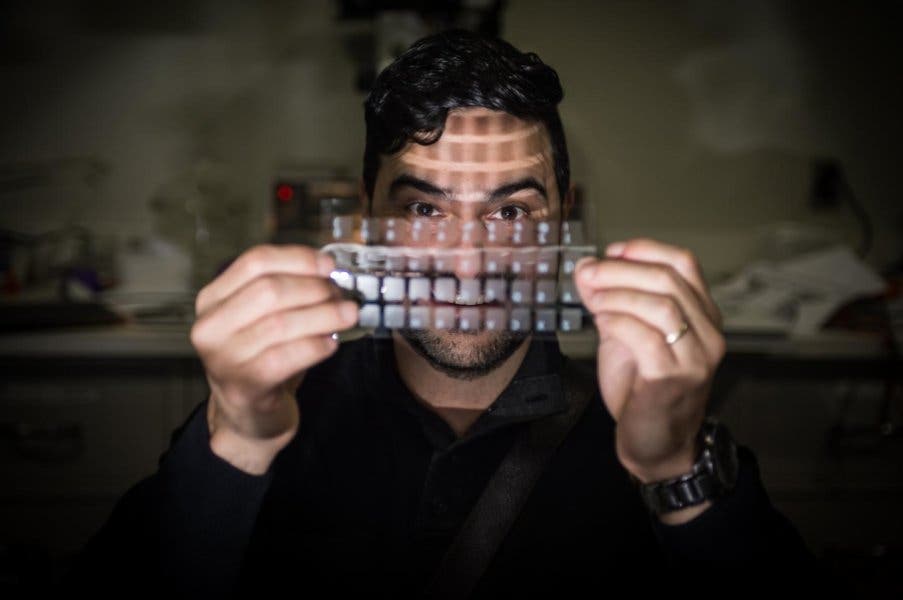Michigan State University engineers have put together a flexible, paper-thin transducer — a device which can turn physical motion into electrical energy and vice-versa. The material could be used to create a whole new range of electronics powered from motion, as well as ultra-thin microphones and loudspeakers.

Image credits Michigan State University.
Harry Potter may have had animated newspapers but you know what Hogwarts never had? Newspaper boomboxes. So I guess it’s score one for the muggles, since we’re about to get just that. Along with newspaper microphones, or anything else that’s really thin and works either as a sound recording or replay device. Our imagination’s the limit.
Fold-a-speaker
It’s all thanks to a team of nanotech engineers from Michigan State University, who designed and produced a prototype ultra-thin transducer. The device is fully flexible and foldable, can easily be scaled up and is bidirectional — meaning it can convert mechanical energy to electrical energy and electrical energy to mechanical energy.
The device’s fabrication process starts with a silicone wafer with several thin layers or sheets of environmentally friendly substances including silver, polyimide, and polypropylene ferroelectret added over it. Ions (which are charged particles) are added onto each individual layer so that they produce an electrical current when compressed.
Known as a ferroelectret nanogenerator (abbreviated FENG), it was first showcased in late 2016 as a sheet which could turn users’ touch into energy to power a keyboard, LED lights and an LCD touch-screen.
Since then, the FENG got some new tricks. The team discovered that in addition to its touch-to-energy transformation ability, the material can be used as a microphone — by turning the mechanical energy of sound into electrical energy — and as a loudspeaker — by doing the reverse.
“Every technology starts with a breakthrough and this is a breakthrough for this particular technology,” said Nelson Sepulveda, MSU associate professor of electrical and computer engineering and primary investigator of the federally funded project.
“This is the first transducer that is ultrathin, flexible, scalable and bidirectional, meaning it can convert mechanical energy to electrical energy and electrical energy to mechanical energy.”
Multiple uses
As a proof-of-concept for sound recording, the team developed a FENG security patch which uses voice recognition software to unlock a computer. Tests revealed that the patch can pick up on voices with a high fidelity, being sensitive enough to capture several frequency channels in the human voice.
To test how well the material would function as a loudspeaker, some FENG fabric was embedded into the faculty’s own Spartan flag. It was supplied with a signal from an iPad through an amplifier. The team reports that it reproduced the sound flawlessly, the flag itself becoming a loudspeaker. One day, you could be carrying speakers around everywhere, comfortably folded in your pocket until you need them. Or you could have a poster of FENG at home, ready to hook up to your PC, taking up virtually no desk space.
“So we could use it in the future by taking traditional speakers, which are big, bulky and use a lot of power, and replacing them with this very flexible, thin, small device.”
“Or imagine a newspaper,” Sepulveda added, “where the sheets are microphones and loudspeakers. You could essentially have a voice-activated newspaper that talks back to you.”
Other applications could include a noise-canceling sheeting that also produces some energy in the bargain, or voice-operated wearable health-monitoring devices. The team says they’re also interested in developing in the “speaking and listening aspects” of the technology.
The full paper “Nanogenerator-based dual-functional and self-powered thin patch loudspeaker or microphone for flexible electronics” has been published in the journal Nature Communications.


